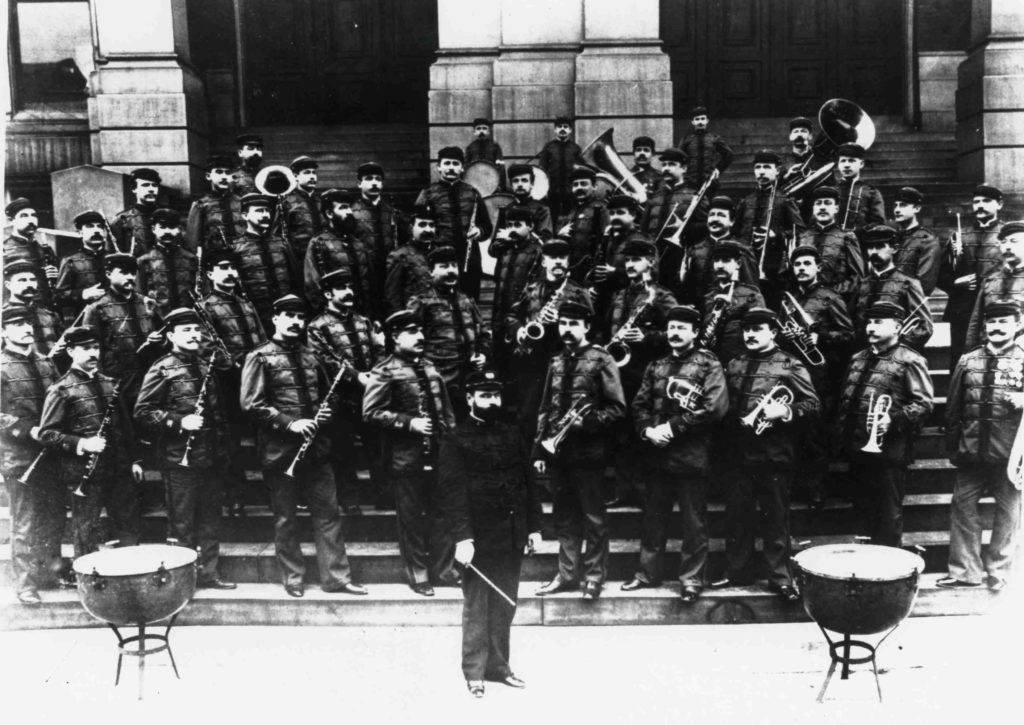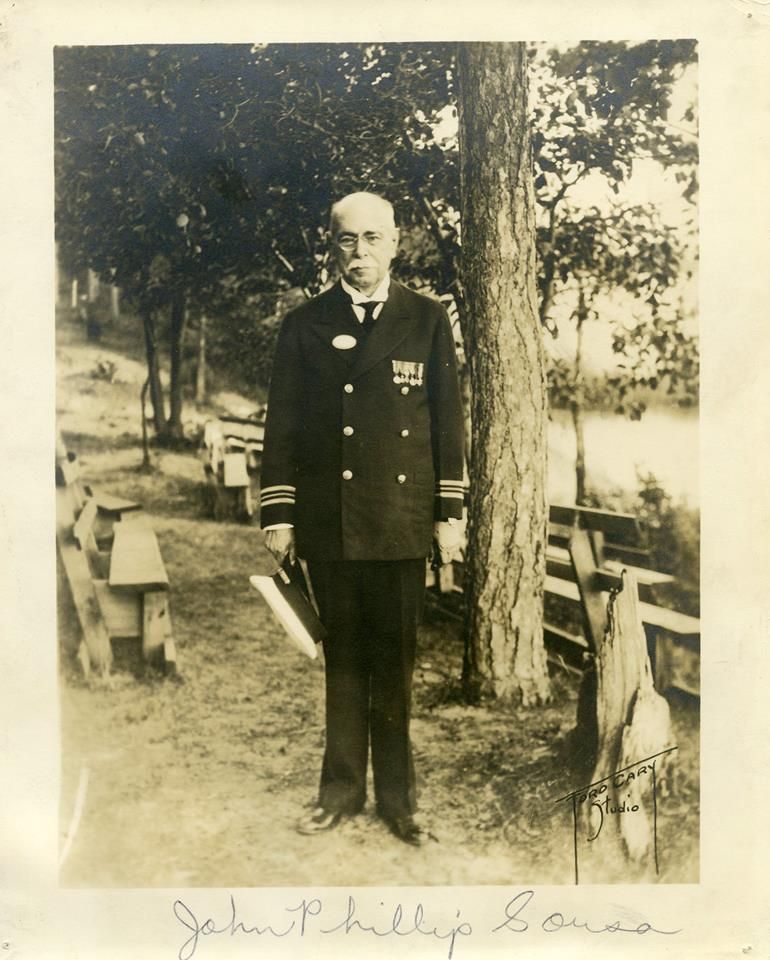MUSIC MAESTRO!
John Philip Sousa was a musician ‘par excellence’. His life and career are richely described. We can state without a doubt, he has left his mark on earth and what kind!
EARLY YEARS
John Philip was born on 6 November 1854 in Washington D.C., USA. His father was born in Spain out of Portugese parents. His mother was born in Bavaria, now in Germany. They met in the USA.
Father Sousa was a trombone player in the US Marine Band. That is the in house band of the American president. Most of the time the band performs in the White House. In those days a stable job for a musician, as it is today. The musical environment in which John Philip was born, offered him possibilities to discover, explore and develop his musical talent at a youthful age. He took classes with John Esputa who taught him to play the violin and the basics of music theory. He didn’t like it much, but there it was.
At the age of 12, the conductor of a Circus Band heard John Philip play his violin. He offered him a job. In 1866 there were few other than touring theater companies and wind bands. The USA was officially founded in 1776, but the Civil War was from 1861-1865. Traveling was considered dangerous for a boy of 12. Therefore, father Sousa did not agree. He managed for John Philip to be accepted as apprentice with the US Marine Band.
In those days one went to Primary school as a child, nothing more. As of 12 years of age one would go to work. Generally to learn a trade as an apprentice to a master. In those days, Secondary school was not common, let alone further studies at a College or University. However, John Philip was allowed to study music at the Music School of the US Marine Band. There he was trained to play on brass instruments and to march.

ADULTHOOD
At the age of 20, John Philip decided to go with the Circus after all. It was a lot safer in 1874 and yes, he was a man now. The USA as we know it today, gradually developed and there was a need for entertainment. The Circus was very succesful in those days. John Philip played the violin and baritonhorn in the orchestra, studied music theory, learned about conducting and began to compose more and more.
In 1880 a message arrived stating John Philip could become the conductor of the US Marine Band. A chance he wasn’t about to pass on.
In 1892 news came that Patrick Gilmore, the most succesful band leader at the time, had suddenly passed away. Gilmore’s manager had his eyes on John Philip Sousa as successor. After 12 years with the US Marine Band, John Philip was up for change and resigned late July 1892 to found his own band.

SOUSA BAND
There are numerous stories about and anecdotes of John Philip Sousa around. What he achieved with the Sousa Band has helped further development of the wind band beyond words. Many actions he took, have lead to changes within the profession decades later.
To begin, Sousa changed the instrumentation of the wind band. Before him, Gilmore had already taken steps adjusting the overall sound of the wind band. Prior, domination of brass instruments was the standard for wind bands. Gilmore brought the number of woodwind instruments at such a level in order to create balance. The orchestral sound of the wind band changed with it.
Sousa went one step further. His orchestral sound was grafted upon the symphony orchestra. He implemented changes in order to perform the music of his contemporaries with a wind band: Richard Wagner, Giacomo Puccini, Camille Saint-Saens, Hector Berlioz and others. Gradually the line up grew from 48 musicians in 1892 to 84 musicians in 1927. Using a more diverse instrumentation at the same time. The so called Symphonic Wind Orchestra was born.
Notwithstanding the broader palet of musical colors which was brought to the stage, touring became an enormous undertaking every time again and again. This was the age of horse, carriage and train. The automobile, touringcarbus and airplane didn’t exist, yet.

SOUSAPHONE & MARCHING BRASS
Most of the time, the Sousa Band played concerts outside. While Sousa developed a warm well rounded sound in his orchestra, it became apparent another sound in the basses was called for. Based on Sousa’s ideas, J.W. Pepper developed a new wind instrument which is seen as crossover between the helicon and the tuba. This was called the sousaphone. At first, the bell was turned up. During a rain shower this literally became a rain catcher. The later model as built by C.G. Conn, had the bell turned forward.
This way, Sousa had stimulated the later development of a series of brass instruments with the bell front, called Marching Brass. It began in the ’50s with the marching mellophone. This was used by the famous jazz musician Stan Kenton in his Mellophonium Band.
In the ‘60s/’70s/’80s other brass instruments with the bell front were built. Some are carried on the shoulders. This evolved into the American Marching Bands (DCI Show Corps).
As if this wasn’t enough for one lifetime, Sousa also played a stimulating role towards implementing the Band Program at American High Schools and Colleges. A development which made the USA the world’s leading nation for wind band music.
The Sousa Band made many tours, both within the USA and abroad. Result was more than 15,000 concerts in 39 years time. During the European tours of 1901, 1903 and 1905, Sousa and his Band also came to The Netherlands. At one of these, a concert was held in the former Paleis voor Volksvlijt in Amsterdam. There were also concerts in Arnhem and The Hague.

END OF THE BAND ERA
As a result of the economic crisis and recession after the Wall Street crash of 1929, the number of concerts and performances of the Sousa Band drastically declined. In 1931 it was disbanded. The Band Era had come to an end. Sousa remained active as conductor and composer. On 6 March 1932 he passed away in his sleep.
The influence of Sousa and his Band is truly phenomenal. Amongst the members of the Sousa Band during those 39 years, we can find many influential musicians, composers, arrangers and manufacturers of musical instruments.
Today, Sousa’s compositions are still being performed worldwide, both by professional and amateur wind bands alike. His music remains alive and kicking!

LINKS

